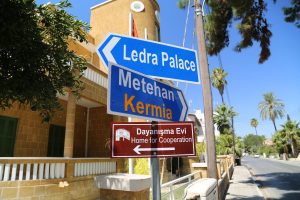
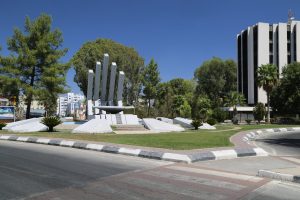 Last summer when I mentioned to people I was planning a trip to Cyprus (Northern Cyprus as well), I often received blank stares or the question “where is Cyprus”. A little geography is in order; the island is in the Mediterranean Sea – in the far eastern reaches south of Turkey and just west of Lebanon. It is the third largest island in the Mediterranean after Italy’s Sicily and Sardinia.
Last summer when I mentioned to people I was planning a trip to Cyprus (Northern Cyprus as well), I often received blank stares or the question “where is Cyprus”. A little geography is in order; the island is in the Mediterranean Sea – in the far eastern reaches south of Turkey and just west of Lebanon. It is the third largest island in the Mediterranean after Italy’s Sicily and Sardinia.
I flew from Beirut, Lebanon – there are certainly plenty of other flights to the islands, especially from the UK. My flight was convenient as I had spent about a week exploring Lebanon prior; the flight was only about 40 minutes.
Like all of the island, the northern part is rich in history at one point involving the Greeks, the Romans and the Syrians and names such as Alexander the Great and Ptolemy. Today this part of the island is safe, laid back, still very rural with an agricultural feel at times and very friendly locals.
During my visit I was only able to explore parts of Nicosia and several beach towns; Nicosia in particular is highly worth exploring with it’s 4500 years of history (and serving as the capital of Cyprus since the 10th century). However there is far more to see in Northern Cyprus and with more time the following attractions should be on anyone’s visit list:
Must see sight number one: Walled City of Nicosia
Easily accessible by pedestrians from the south who cross into the north via Ledra Street. The original city walls were built in the middle ages and were later completely rebuilt in the 16th century. The walls are extremely well preserved and are certainly a highlight but there are numerous other attractions within the old city. Highly worth seeing is the Selimiye Mosque – originally built in the mid 1500’s. And for those wanting to experience a little culture and history at the same time – head straight for the Great Turkish Bath (500+ years old) and still operating. Shoppers can take note of the Bandabuliya Covered Bazaar – a mix of fruits, vegetables, meats and plenty of souvenir shops (mostly locals shop here).
Must see sight number two: Beaches
Sometimes you just want to go somewhere and do nothing – that was my intention when I came to Cyprus. And you can do this in much of the country – especially when you park it for a few days near a beach. The northern part of the island offers a diversity of beach options including beaches in front of larger hotels or smaller off the beaten path spots. Clear blue waters are mesmerizing – the warmest months for swimming or sunbathing are from June through October. Three noted beach areas are Kyrenia (including Alagadi Turtle Beach famous for it’s turtles that lay eggs on the sands in the summer), Famagusta Beaches (known for its long white sandy beaches) and Karpaz (wide sandy often empty beaches.
Must see sight number three: Castles
Get in shape for some hiking up to several ancient castles, all with excellent views. Three Byzantine/Crusader castles are St. Hilarion Castle (arguably the most picturesque in Northern Cyprus), Buffavento Castle (the highest of the castles) and Kantara Castle (probably the best preserved of the three).
Also highly worth exploring is the Kyrenia castle with its Venetian harbour. Ideal to visit either during the day or evening – activities include boat watching, dining at alfresco restaurants, or simply exploring on your own.
Have you been to Northern Cyprus? Any favorite beaches or parts of the island?

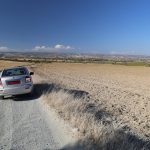
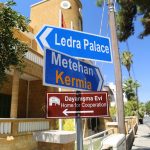
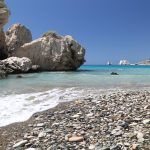

It seems like Cyprus is a gem on an off-beaten path
Teh – yes, a great place to get away from the it all, relax, eat and drink good food and lounge around the beaches – at least that is what I did when I visited 🙂
Sounds and looks lovely! I hope to go in the next year on a return trip to Turkey or Lebanon!!
Jacki – you won’t be disappointed with a visit to Cyprus!
Travel brings power and love back into your life.
Thanks for sharing this informative post! I really like it! keep up the great work! well done!
Please be aware “Northern Cyprus” has been illegally occupied since July 1974. The ‘Attila line’ separates it from the free part of the island. The Turkish policy of violently forcing a third of the island’s Greek population from their homes; preventing their return; and settling people from Turkey there, is ethnic cleansing. Many lost their lives, many are still missing and many are refugees to this day. There are 40,000 Turkish soldiers in the occupied area, which is recognised in law by Turkey alone.
South of the line, the Republic of Cyprus is under government control and functions in the same way as any other European country. As so many people were suddenly displaced to a relatively small area, parts are densely populated while others, e.g. the Troodos mountains, offer an alternative holiday experience.
Cyprus seems like an ultimate travel destination and the northern part of it is truly astonishing, Dave. When’s the best time of the year to go to Cyprus and is it a good destination for a road trip?
Andri – I am well aware of the situation in Cyprus – and was when I visited. For travelers it is easy to cross between the north and the south.
Agness – I visited in late August and wasn’t to crowded – the county has a fairly long warm season – so I think anytime from April through mid November would be ok. I didn’t get the chance to visit Ayia Napa in the southern part of the island – but I hear its more of a party atmosphere.
North Cyprus is a beautiful place to visit. There many historical sites, magnificent beaches, great restaurants and enjoyable things to do. Kyrenia harbour and catle, St. Hilairon Castle, Karpas Peninsula are top visited places.
North Cyprus is a must see place if you are heading to Cyprus. If you are based in the south part of the island it is easy to cross the border to the north. Northern Cyprus offers great beaches, world class restaurants and amazing places to see.